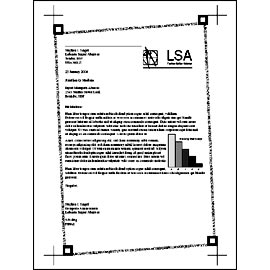Page Yield
Page yield is the approximate number of pages that can be printed with a particular cartridge. Since everyone’s printing habits are different, actual page yield can vary from user to user. In order to hold manufacturers accountable to the same standards, every ink cartridge is subjected to page yield testing based on ISO/IEC 24711 specifications. This test helps determine what the page yield of an ink cartridge will be, giving customers a reliable way to compare competing products. If you are in the market for a new printer make sure you take cartridge page yield into consideration. Two similarly priced printers could require you to use cartridges with very different yields! Keep the total cost of operation in mind when searching for your next machine
How to determine your cartridge's your page yield
Customers often worry about the yield of pages their cartridges produce and will mistakenly try to track a cartridge’s yield by time. The amount of time it takes for a cartridge to go empty is an inaccurate indicator of its page yield. The manufacturer’s cited page yield for ink and toner cartridges is given at 5% coverage. This means that the quoted page yield is based upon printed pages where only 5% of the page has been imprinted with ink. This comes out to be a small amount of imprinted ink – roughly one quarter of the page. For example, a short memo has approximately 5% coverage. If you are printing letters, using legal size paper, printing photos, web pages or any type of graphics, your coverage will vary greatly and your page yield will drop significantly
There are two ways to properly check for yield. First is to utilize any page count your printer has. Refer the user's manual for instructions. The other way is to count reams or boxes of paper you have used with each cartridge. Both of these methods will tell you how many pages per cartridge you are using
Please keep in mind that although both methods provide you with an approximation, your cartridge’s yield will ultimately depend on your printing practices. You should also take into consideration the typical print coverage on the pages that you are producing. For instance, if you only print short memos you will reach – or, come close to – the manufacturer’s state page yield. In contrast, if you write full page letters or print graphics, your page yield will be considerably less. A cartridge with a 4000 page yield, for example, will run out of ink or toner at around 800 pages when used to print full pages of text and graphics with a high percentage of ink or toner coverage.


